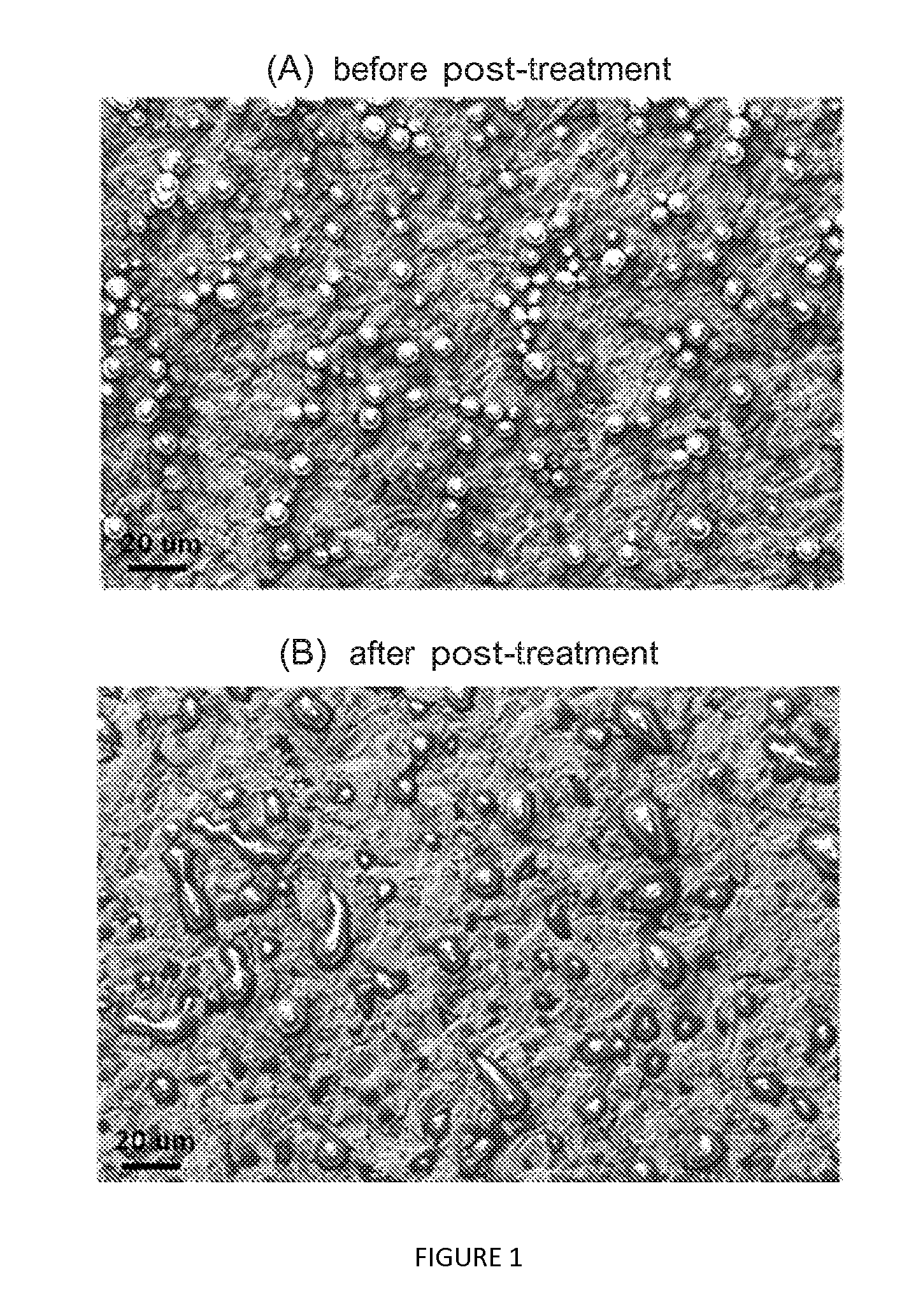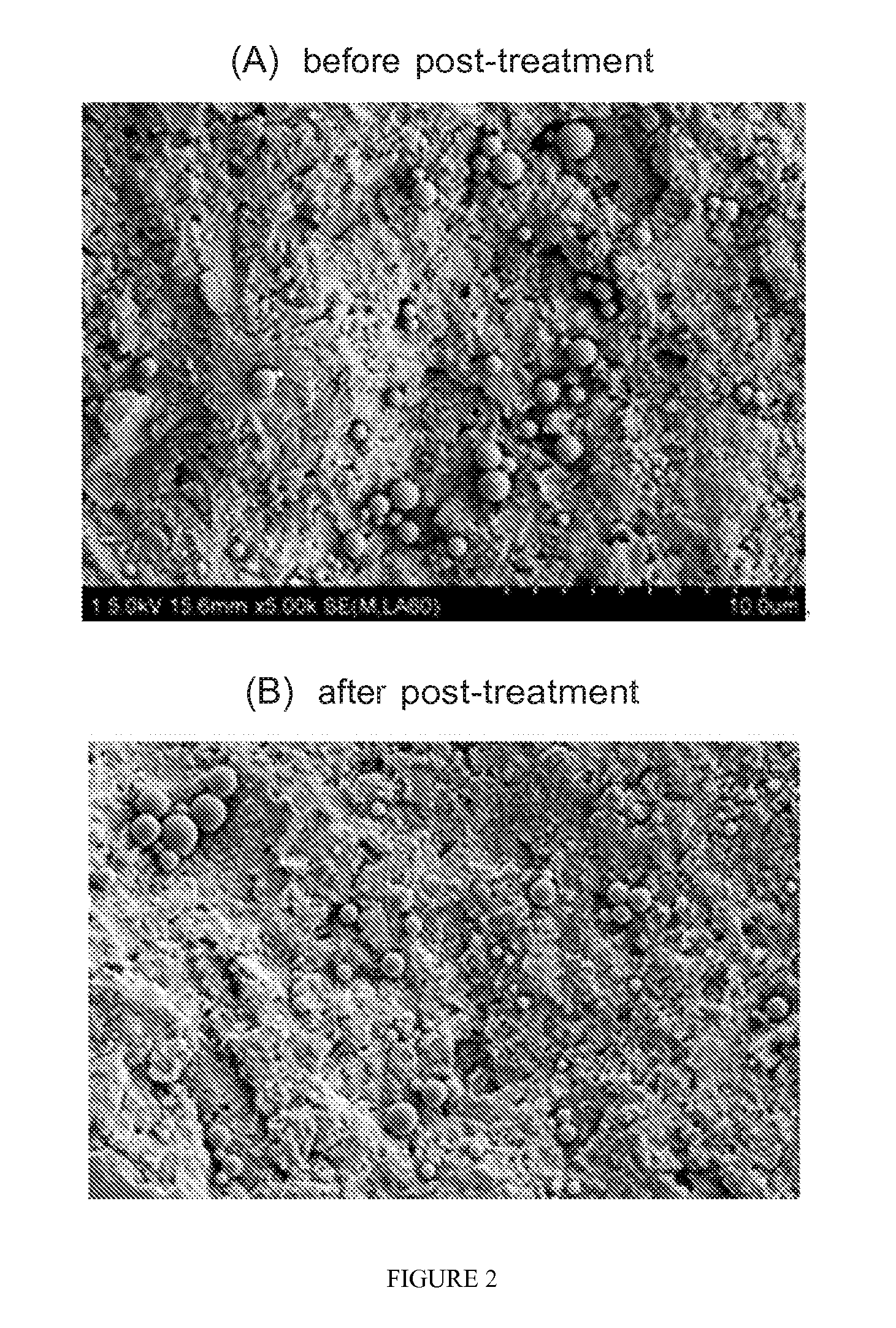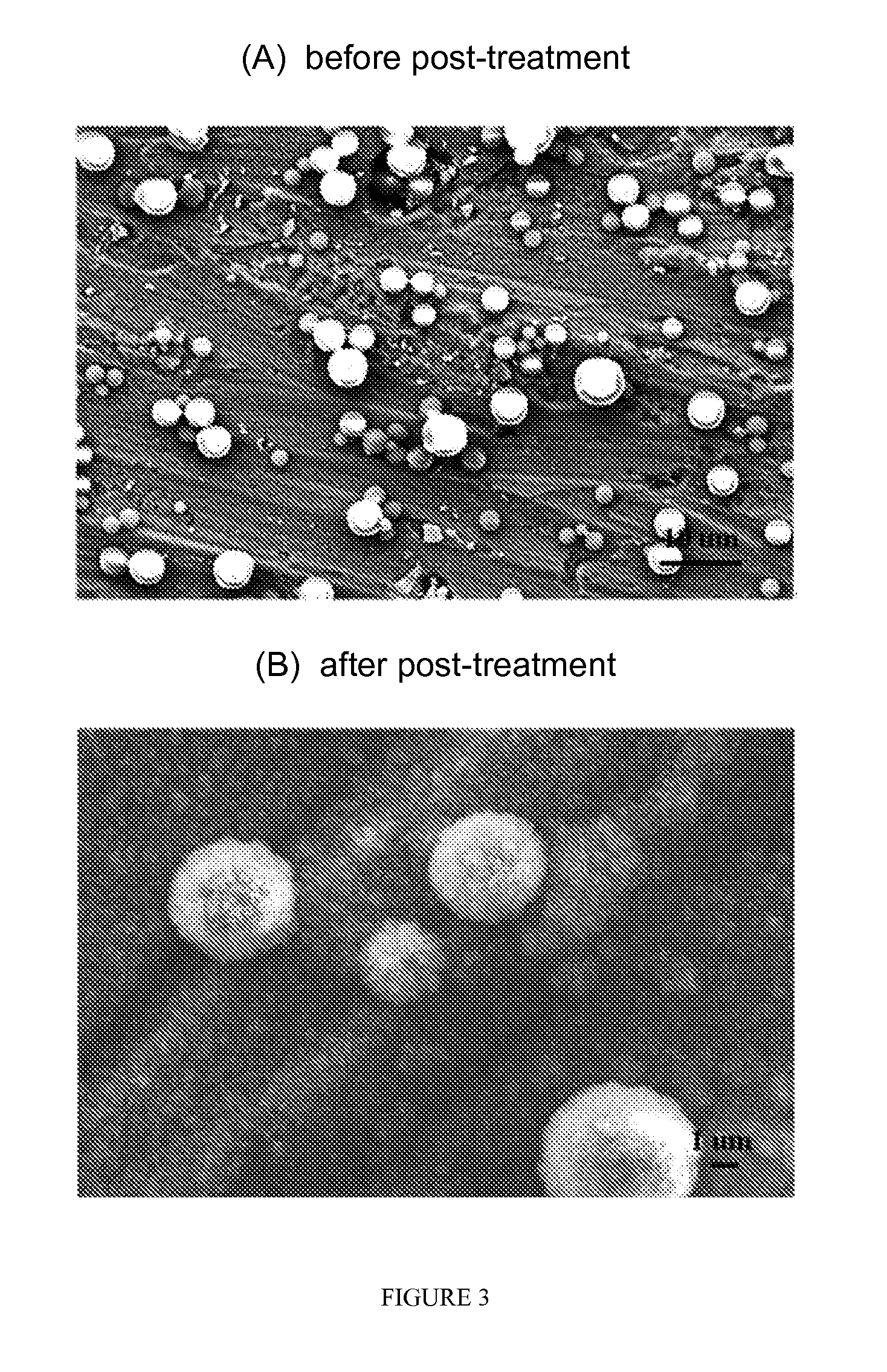Method for preparing biomedical metal alloy material with multi-drug delivery system
a biomedical metal alloy and multi-drug technology, applied in the field of preparing biomedical metal alloy materials with multi-drug delivery systems, can solve the problems of inability to direct and rapid bone regeneration, no effective method has been developed so far, and most metal alloy materials that are currently available do not have these properties, etc., to achieve the effect of reducing the number of patients, improving the cell affinity to implantation sites, and effectively using biomedical metal alloy materials
- Summary
- Abstract
- Description
- Claims
- Application Information
AI Technical Summary
Benefits of technology
Problems solved by technology
Method used
Image
Examples
example 1
Preparation of Titanium Implant Immobilized with PLGA Particles Loaded with Vancomycin
[0058]1-1. Preparation of Titanium Discs with Rough Surface
[0059]Titanium discs with a diameter of 5 mm and a height of 3 mm were prepared by casting. Then, the surface of the titanium discs was sand-blasted to form a rough structure thereon.
[0060]1-2. Preparation of PLGA Particles Loaded with Vancomycin
[0061]PLGA particles loaded with (or containing) vancomycin were prepared by a double emulsion method. First, 1 g of poly(lactic-co-glycolic acid) (PLGA) (monomer ratio 75:25) was completely dissolved in 10 ml of dichloromethane, a solution in which 40 mg of vancomycin, a bioactive drug, was dissolved in 1 ml of water was added thereto, and the resulting mixture was emulsified using a homogenizer at 20,000 rpm for 3 minutes to prepare a suspension. The prepared suspension was added to 100 ml of 0.2 wt % polyvinylalcohol (PVA) aqueous solution and emulsified using a homogenizer at 20,000 rpm for 3 mi...
example 2
Preparation of Hydroxyapatite (HA)-Coated Titanium Implant on which PLGA Particles Double-Containing Vancomycin and Dexamethasone (DEX) are Immobilized
[0072]2-1. Preparation of HA-Coated Titanium Discs
[0073]Titanium discs with a diameter of 5 mm and a height of 3 mm were prepared by casting. Then, the surface of the titanium discs was coated with hydroxyapatite (HA) nanoparticles using a low temperature high speed collision (LTHSC) method.
[0074]2-2. Preparation of PLGA Particles Containing Vancomycin and PLGA Particles Containing Dexamethasone (DEX)
[0075]PLGA particles containing vancomycin were prepared by a water-in-oil emulsion method. First, 500 mg of PLGA (monomer ratio 75:25) was completely dissolved in 8 ml of dichloromethane, a solution in which 30 mg of vancomycin, a bioactive drug, was dissolved in 3 ml of DMSO was added thereto, and the resulting mixture was emulsified using a homogenizer at 20,000 rpm for 3 minutes to prepare a suspension. The prepared suspension was add...
example 3
Preparation of Titanium Implant on which PLGA Particles Triple-Containing rhBMP-2 / Heparin, Vancomycin, and Dexamethasone are Immobilized
[0088]3-1. Preparation of Titanium Discs with Rough Surface
[0089]Titanium discs with a diameter of 5 mm and a height of 3 mm were prepared by casting. Then, the surface of the titanium discs was sand-blasted to form a rough structure thereon.
[0090]3-2. Preparation of PLGA Particles Triple-Containing rhBMP-2 / Heparin, Vancomycin, and Dexamethasone
[0091]PLGA particles containing rhBMP-2 / heparin were prepared in the following manner. First, 40 mg of PLGA (monomer ratio 75:25) was completely dissolved in 2 ml of DMSO, a 5% (w / v) Pluronic F-127 aqueous solution in which heparin (Aldrich Co.) was dissolved was slowly added dropwise thereto, thus preparing heparin-functionalized PLGA particles. The heparin-functionalized PLGA particles were collected by centrifugation at 12,000 rpm for 1 hour, and 8 mg of PLGA particles were dispersed again in 40 μl of phos...
PUM
| Property | Measurement | Unit |
|---|---|---|
| porosity | aaaaa | aaaaa |
| diameter | aaaaa | aaaaa |
| pore size | aaaaa | aaaaa |
Abstract
Description
Claims
Application Information
 Login to View More
Login to View More - R&D
- Intellectual Property
- Life Sciences
- Materials
- Tech Scout
- Unparalleled Data Quality
- Higher Quality Content
- 60% Fewer Hallucinations
Browse by: Latest US Patents, China's latest patents, Technical Efficacy Thesaurus, Application Domain, Technology Topic, Popular Technical Reports.
© 2025 PatSnap. All rights reserved.Legal|Privacy policy|Modern Slavery Act Transparency Statement|Sitemap|About US| Contact US: help@patsnap.com



